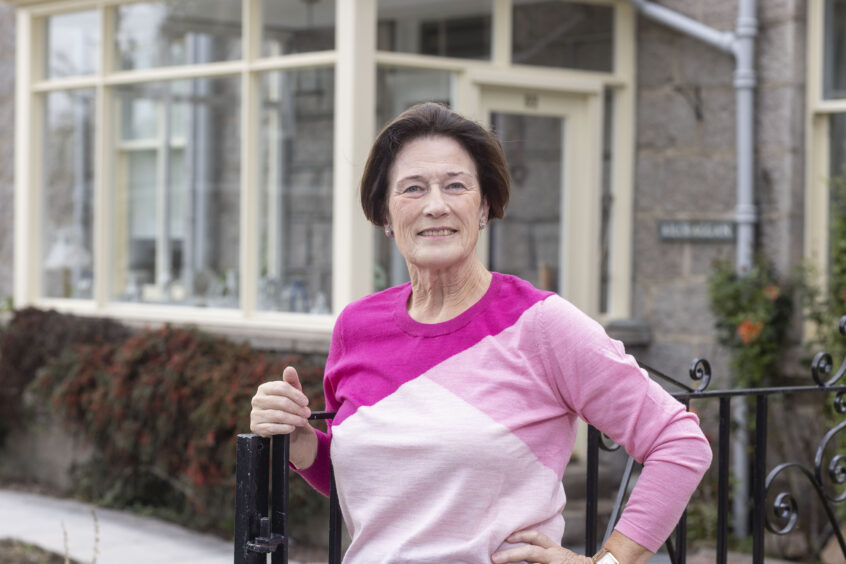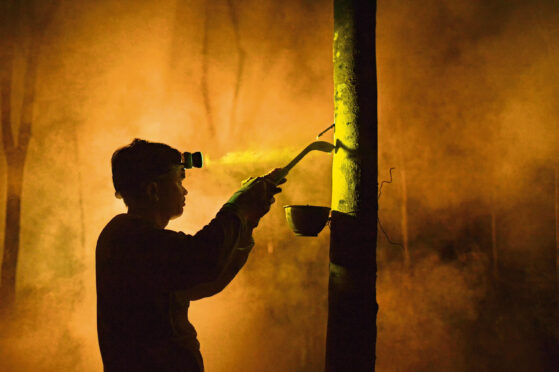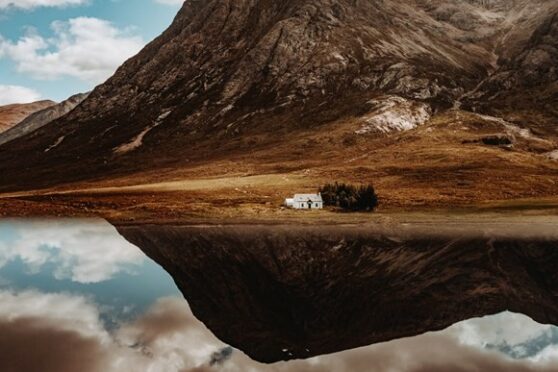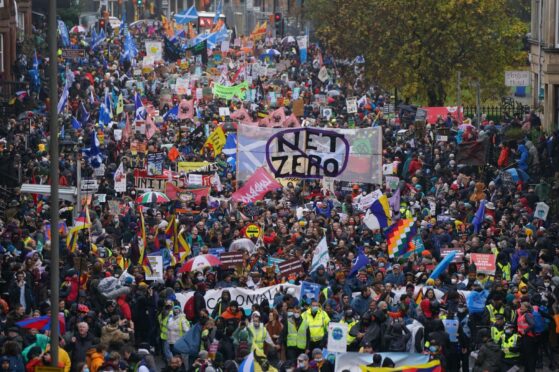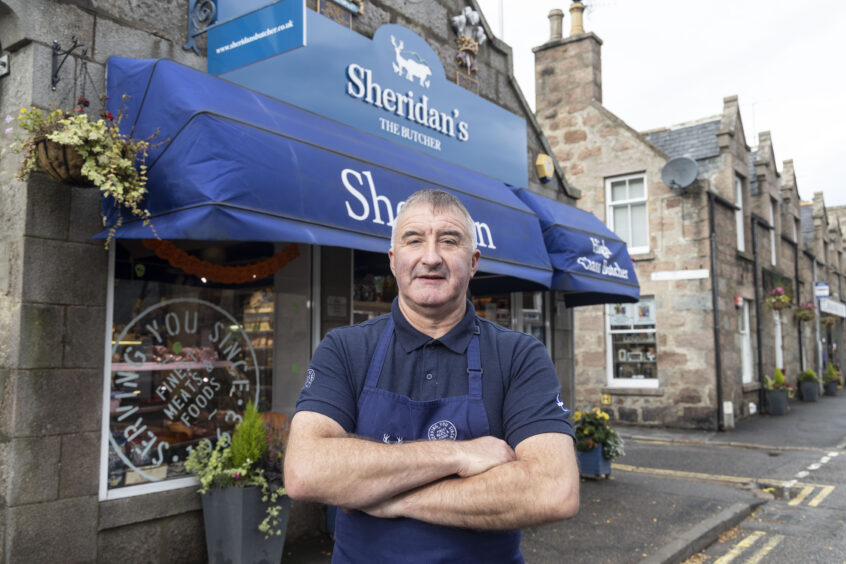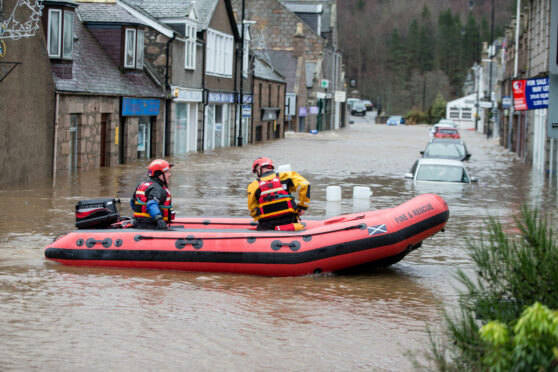
“We turned on the lunchtime news and saw a liferaft in our road.”
It was December 30, 2015 and Josephine Hazley, who was away for Hogmanay, was watching live footage from her home village, a disaster zone.
It was the storm of storms; a tempest that raged across Scotland triggering what experts would describe as the most extreme winter flooding Britain had ever endured.
It was Storm Frank and Ballater, a picturesque Victorian tourist village, a favourite haunt of the royal family when staying nearby at the Queen’s Scottish residence of Balmoral, was among the worst hit with hundreds of homes and scores of businesses devastated.
The community had already endured weeks of rainfall and when Frank hit, in one of the warmest and wettest Scottish winters, it pounded already saturated ground and combined with melting mountain snow to swell the River Dee, bursting its banks at Ballater Golf Club.
Soon much of the town lay submerged waist-deep in water as the river swirled into Main and Bridge Streets and surrounding roads, taking domestic oil tanks and other debris with it. Some residents had to be rescued by boat and helicopter. A number of homes near the village caravan park were reported to be under 20ft of water, with static caravans ripped from their stands and swept downriver.
The A93 Ballater to Braemar road was torn away by the water leaving a vast chasm in the carriageway. The roaring river destroyed part of Invercauld Bridge and the iconic Edwardian Cambus O’ May suspension bridge was severely battered and buckled by the storm. Abergeldie Castle near Balmoral was left teetering on the brink of collapse.
More than 300 homes and 60 businesses would be wrecked, including the home of Hazley, 68, who spent 16 months in a rented flat after her four-bedroom detached granite house was partially destroyed. She had been in Northern Ireland for New Year, and remembers: “When we put on the one o’clock news we saw a lifeboat on our Victoria Road, yards away from our house. The whole bottom half of the village was flooded and the caravan park absolutely devastated. One of the lasting images I have is of caravans floating down the River Dee. When we saw that we started packing and booked a sailing back.
“The earliest we could get was the next day, December 31. We spent the night wondering what was happening to our home. We arrived back to Ballater at about 9pm after a 10- hour journey.
“As we approached the village, instead of being greeted with twinkling Christmas lights and lots of people milling about celebrating Hogmanay, we were met with total darkness and destruction. It was deserted. There were no lights because of power cuts, and there was a smell of oil from domestic tanks that were broken and washed away in the flood.
“We drove through near-empty streets littered with debris and refuse skips. Furniture and old carpets were lying everywhere where people had already started clearing out businesses and homes. I was reduced to tears. We could not face going home that night so stayed at friend’s holiday apartment.
“The next morning there was a lot of activity with lorries going up and down the village with sandbags. We got to the house at 7.30am. There was no power in the house. I knew it was going to bad – we had been warned – but I did not expect it to be as horrific as it was.
“It was as if there had been a tornado in our home. The furniture – heavy leather suites – was tossed over, you could see the wet right up the wallpaper, lamps and photographs were washed off tables, and there were TVs lying on the floor. Our Christmas tree was toppled over and unit doors in the kitchen were torn off with the force of the swirling water. From the back door to the front door was devastation. It was like a war zone.”
Rising damp though meant the upstairs could not be used and they had to move out, taking with them their salvageable possessions. “We were out of our house for 16 months,” said Josephine. “That was one of the worse things. We moved back in before the house was ready in March 2017. In that time, we had lived in four different properties and that is hugely stressful.
“Our total loss for buildings and contents was easily £300,000 to £350,000. We didn’t get all of the contents insurance because the upstairs was intact.”
The Hazleys claimed that after their insurance paid out they were still about £20,000 out of pocket. But equally hard were the items whose value is beyond measure.
Hazley explained: “We lost a lot of precious belongings. What affected me most was that I had kept some of our children’s earliest schoolwork, and it was ruined in the flood. An armchair you can replace, but these things of significance like the first Mother’s Day cards, their little notes and special photographs, you cannot replace.
“My youngest daughter Emily was doing her Highers at Aboyne Academy and was very distressed, having lost all of her notes and having to move from property to property. Catherine our eldest was getting married in the October and we wanted to get back into our home, we needed somewhere safe to hang her wedding dress and the bridesmaids’ dresses.
“Now, every time there is a downpour I am afraid. That flood affected us emotionally, physically and mentally. I could not sleep at the time, and it was exhausting.”
But she said the people of Ballater rose to the monumental challenge they faced. She said: “We were so grateful to the community who rallied round, especially the people who weren’t affected, they helped the those who were so much. We had not just friends, but people I had never laid eyes on before, knocking on the door and offering their services.
“Ballater is not defined by the flood. It remains a wonderful tourist village with a warm and welcoming community.”
John Sinclair, 57, a partner in HM Sheridan butchers on Bridge Street remembers the day too. He said: “I arrived at work at 6.30am and the river was already high. Police advised we might have to move out but I thought they were over-reacting. We were busy making stuff for Hogmanay so we kept going. But they came back to say the we would have to evacuate because the river had burst its banks. We employ 15 people. Everyone left apart from three of us.
“We put sandbags at the door but it was a waste of time. The water came through in one sudden surge. When we walked out of the shop it was waist deep – about four feet – and freezing. The water was in over the counters, which were full of meat and products. The fridges were full too. We managed to save very little. We had about £100,000 worth of stock.
“The flooding lasted only a day, but we were left with one hell of a mess. The water had knocked over domestic diesel and oil tanks along the way so the floor was two inches deep in kerosene smelling mud.”
It took less than three hours to flood the shop, closing it for about three months. And although it was among the first to reopen after major restoration work, the overall cost of the damage was around £250,000, covered by insurance.
The home Sinclair shares with wife Gillian, 54, half-a-mile away on in Craigview Place was also hit. An hour after the shop flooded, water poured into his house and came up through the shower leaving the downstairs under a foot of water. He and Gillian were out of their home for six months.
Sinclair said: “I think it was the perfect storm, the mild weather and the rain, we would be unlucky to get that again. But climate change does concern me. We have had more high water in the last 10 years than previous ones. I am not nervous but a lot of people in village are.”
Glen Muick Church in the heart of Ballater became an island when Storm Frank struck. Slightly elevated, it was dry spot with the power to run a food kitchen for those who needed it.
Its minister Rev David Barr told how the kirk, its manse, and the unoccupied Victoria Barracks in the west of the village, became a refuge for residents whose homes were under water.
Mr Barr, 59, who was a probationary minister at Ibrox, Glasgow, before taking up his first charge at Glenmuick Kirk in 2014, remembers the incredible rallying of the village and how the community – from the village bank to the royal family – stood side by side to help those worst affected.
“Bank of Scotland were amazing. The central bank that sends the money to cash machines didn’t want it back because it was contaminated from the flood. It needed to be cleaned before it could be returned.” He said staff washed the cash by hand and hung it up to dry inside the bank. The minister laughed: “When I went in they had £10 and £20 notes they had hand washed hanging up to dry. It looked like a cross between a Colombian money laundering operation and Widow Twankey in panto. At my church the water came to the lip of the door, but it stayed dry. The church was an island. We were running food 24 hours a day. The Duchess of Rothesay brought in cake she had made.
“The local care home Sluie Mohr had flooded too, so up in the manse we had about 90 of its old folk. A lovely old man we called Double Sandy, who was a 102 and whose real name was Alexander Alexander in his own sheltered house, not part of Sluie Mohr. Water had come into his home and ended up round his chest so rescuers had to smash the window and get him out in a tractor bucket. My wife and I were just passing and happened to see him in the ambulance and they took him up to the manse. Sadly he died about a year later.
“People everywhere were taking in others and giving up their homes for them. The whole community pulled together. The Queen and Prince Charles wanted a daily up date from me. I was phoning Buckingham Palace at two in the morning and the phone would answer and I’d leave a message. I am a wee boy from Easterhouse in East End of Glasgow and there I was phoning the palace. It was surreal.
“If the flooding of Ballater has done anything, it has concreted the village, young and old. That indomitable community spirit, lives on.”

Enjoy the convenience of having The Sunday Post delivered as a digital ePaper straight to your smartphone, tablet or computer.
Subscribe for only £5.49 a month and enjoy all the benefits of the printed paper as a digital replica.
Subscribe